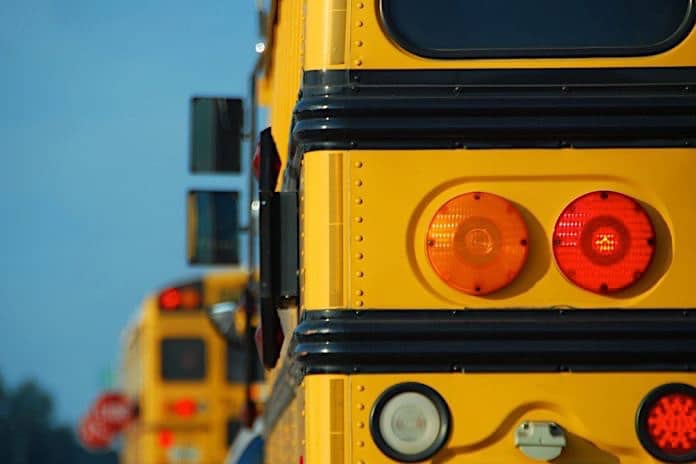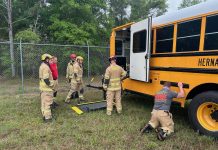A new white paper seeks to shed light on transportation options available to school districts for increasing student participation in extra-curricular activities, with a recommendation that school bus transportation be supplemented by public transit transportation for students that are widely scattered. But first, the true costs and benefits must be analyzed.
In his paper “School Bus Versus Public Transportation: Secondary Educational Opportunities Resulting from the Transportation Alternatives,” David Peterson, transportation analyst for St. Paul (Minn.) Public Schools, set out to provide a solution to inflexible school bus schedules at dismissal that discourage participation in school-activity programs.
The first part of his solution is to assign students to neighborhood schools, where students may walk home after activities if a ride on the school bus or with parents cannot be obtained. However, the majority of neighborhood students would still be school bus riders, which he adds is an “enormous” marginal cost savings for school districts over public transportation for large groups of students. And students with IEPs and 504 plans, homeless students and others with “special needs” would continue to ride the school bus unless other more economical means are identified on a case-by-case basis.
Peterson, who is also the former chairman and current steering committee member of the NASDPTS State and National Associations Committee (SNAC), says a common mistake he sees nationwide is the comparison of the average cost of school bus ridership with the average cost of transit bus ridership.
“School bus transportation has enormous economy of scale,” he tells School Transportation News. “The comparison should be marginal cost per student versus marginal cost per student.”
He writes in St. Paul that the marginal cost per student on the school bus is $0.29 per day, or $0.145 per ride for high school students in a full school bus. However, the fare for secondary students riding Metro Transit is $1.35 per ride, or $2.70 per day.
But he adds, when the need for student participation in after-school activities is valued more than the cost efficiency of the yellow bus, transit is often preferred because it offers more flexibility of service as seen with the various times transit buses run throughout the day and night. Still, transit rides can include further walks to and from public transit stops than to and from school bus stops, and inclement weather can be a challenge as well as extended waiting times.
Yet, while transit remains a viable option for high school students, Peterson says it is not always appropriate for younger students. For example, Peterson notes that students on transit are mingled with the general public, which has resulted in parental concerns about child safety, and school buses are built to stricter construction and component standards required by the federal and state government. In Minnesota, school bus drivers are also required to obtain an additional “school bus endorsement” on their CDL as well as receive annual training on such things as student behavior and evacuations. School bus drivers can also lose their school bus endorsement if convicted of multiple Minnesota defined moving violations or any felony.
Peterson cites results from a survey conducted by the “Metropolitan Council Plan for Public Transportation of Students in Grades 9-12” that indicates mixed support for extending transit programs. In Minneapolis, 37 percent of respondents indicated it was a “bad idea” compared to 31 percent who said it was a “good idea.” Meanwhile, 32 percent said it was an “average idea.”
In neighboring St. Paul, 42 percent said extending transit was a “bad idea,” and only 29 percent said it was a good idea. Another 30 percent said it was “average.”
But he also points out that sometimes transit can be less expensive than school buses, especially when schools or programs serve relatively fewer students and are scattered over a wide area.
Peterson concludes that encouraging student participation in after-school programs is best achieved by assigning students to local neighborhood schools and by utilizing transit for secondary students who are grandfathered to attend non-local schools. He also recommends that all non-public high school students at schools with low enrollment take transit.
Furthermore, he said more students walking or biking to school and shorter school bus routes can lead to a reduction in the number of school bus routes, with cost savings funneled back to the classroom.
















